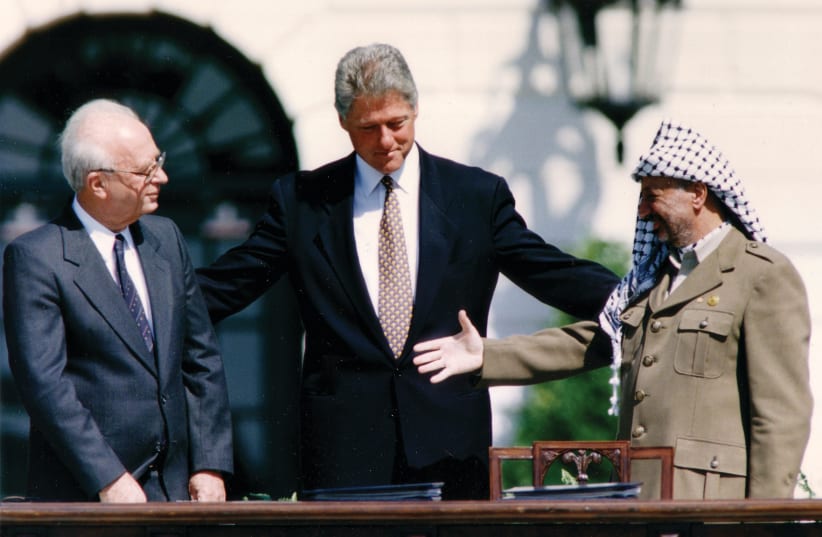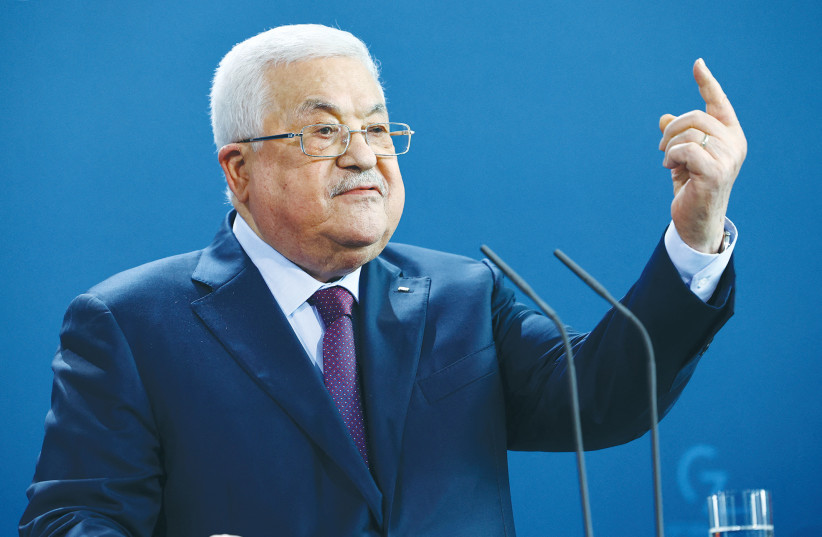September 13, 1993 – 29 years ago the first Oslo Agreement was signed. The hope of peace lasted until September 2000. Since then, there were two short periods of hope – the Taba negotiations in January 2001, and the Olmert-Abbas negotiations of 2008. From that time onward, we have had little or no real reason for hope of peace between Israel and Palestine.
The recent rise in Palestinian armed resistance, the increasing support among Palestinian youth for the armed struggle, increased support and encouragement for young Palestinians to participate in violence against the occupation, and the deterioration of the Palestinian Authority’s control over parts of the West Bank are symptoms of a deep disease.
The Israeli security establishment is worried.
The head of the Shin Bet, Ronen Bar, speaking this week at a conference in Herzliya stated that the Israeli security forces have increased arrests, military operations all over the West Bank, especially in area “A” – Palestinian cities under “full Palestinian control” and internet surveillance. Israeli politicians in their election campaigns are speaking about the decline in personal security for Israelis. Israeli settlers in the occupied territories are putting pressure on the government and military to increase their presence and strengthen their actions against the Palestinians, and to annex the West Bank or parts of it.
The so-called Israeli experts place the blame or reason for the deteriorating security situation on the competition that has already begun for who will lead the Palestinian Authority after Mahmoud Abbas. These so-called experts are looking with a magnifying glass under the street lamp and none of them are looking at the whole picture.
The real disease is the Israeli occupation
THE DISEASE that must be addressed, but will not be, is the occupation – 55 years of Israeli military rule over millions of Palestinians with no end in sight. Young Palestinians see no reason to hope that their lives will improve in the coming years. Palestinians see the creeping annexation of Israeli expansion everywhere. Recently, they see Israeli soldiers and settlers even removing Palestinian flags all over the West Bank.
Settler violence is front page news every day in Palestinian newspapers and headlines on every Palestinian radio and television station. Eighty-one Palestinians have been killed by Israeli soldiers or settlers since the beginning of the year – many of them youths and many who posed no life-threatening danger to anyone.
Israeli outposts are set up overnight encroaching on Palestinian-owned land. The olive harvest is around the corner and violent, hating Israeli settlers are building fences and constructing roads that will block Palestinians from getting to their land. Olive trees are destroyed by these violent settlers every week.
The Palestinians see the Israeli army protecting the violent settlers and then arresting the Palestinians who are the victims of the settler violence. This is not made-up or “fake news” – I have witnessed it with my own eyes as well as hundreds of other Israelis who express solidarity with the Palestinians in efforts to protect them and document the violence. In addition to all of this, with the upcoming Jewish holidays, al-Aqsa/Temple Mount could become the focal point of a new round of acute violence involving Gaza as well.
The Israeli approach to confronting Palestinian violence may work in the short term, but it is like placing a Band-Aid on a deep, bloody wound or like prescribing aspirin for cancer. Dealing with the real issue is not the job of the Shin Bet (Israel Security Agency), although there were previous heads of the Shin Bet who did see the big picture and tried to advise the decision-makers to see and understand the political reality.
The Lapid and Bennett governments’ answer to what should be done to “shrink the conflict” are baby steps that slightly improve the economic situation in the West Bank and Gaza. These steps are necessary because the situation is so bad, but they are not reality-changing steps and their impact is only very temporary. No political party has focused its campaign on ending the occupation and renewing negotiations with the Palestinians. There is no such thing as managing this conflict – it is way beyond management.
The last serious negotiations that took place between Israel and Palestine were during the Olmert-Abbas talks: 42 direct negotiating sessions were held mostly in the prime minister’s official residence in Jerusalem.
Since then, there have not been negotiations on ending the conflict. The only official contact between Israel and the Palestinian Authority or the Palestinian Liberation Organization is between security officials dealing with security matters. In the last 14 years of no negotiations, the paradigm of the two-state solution has most probably lost its viability.
Is the two-state solution to the Israeli-Palestinian conflict still viable?
DESPITE THE evaporation of the majority of Israelis and Palestinian who supported it – and despite the disappearance of the possibilities for territorial swaps, removal of settlements and outposts, and the viability of seeing Jerusalem as a shared capital – the Zionist left and the Joint List continue to repeat the mantra of two states, just as most of the developed countries of the world.
I seriously doubt if most of those who speak about the two-state solution really believe that it remains viable. If they did, there would be fire under their feet and we would all feel the urgency of taking action. Those nations who support the two-state solution would recognize the State of Palestine just as they recognize the State of Israel. But there seems to be no sense of urgency.
In light of this reality, the question we should all be addressing is when the next explosion will occur and what form it will take. If the next government of Israel will be a full right-wing religious government that will renew plans for annexation, and will continue to support and encourage settler expansion and violence, we will surely see the return to an armed Palestinian struggle.
It is very likely, if the Palestinians refrain from blowing up Israeli non-combatants, that the international community will side with the Palestinians. If the Palestinians attack only soldiers and armed settlers and not civilians, Israel will not be able to convince the world that this is terrorism against Jews because they are Jews. Attacking only soldiers and armed settlers would not be defined by international law and international sympathy as acts of terror.
This is where we are heading and those in Israel, in Palestine, and around the world would be wise to take preemptive proactive steps to address the disease. How much longer does anyone believe that it is possible to continue to keep millions of people under a harsh military occupation?
The writer is a political and social entrepreneur who has dedicated his life to the State of Israel and to peace between Israel and her neighbors. He now directs The Holy Land Bond.

